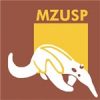It gathers more than 500,000 specimens, standing out among the largest collections in South America. It includes types of about 600 species of Crustacea.
The marine collection is formed mainly by species from the western Atlantic (with special reference to the region between French Guiana and Argentina), but includes extensive material from selected groups of Decapoda from other oceanographic basins (e.g., Indo-Pacific, Mediterranean). The collection of land and continental waters crustaceans comes essentially from the Neotropical region and practically includes all regions of Brazil.
